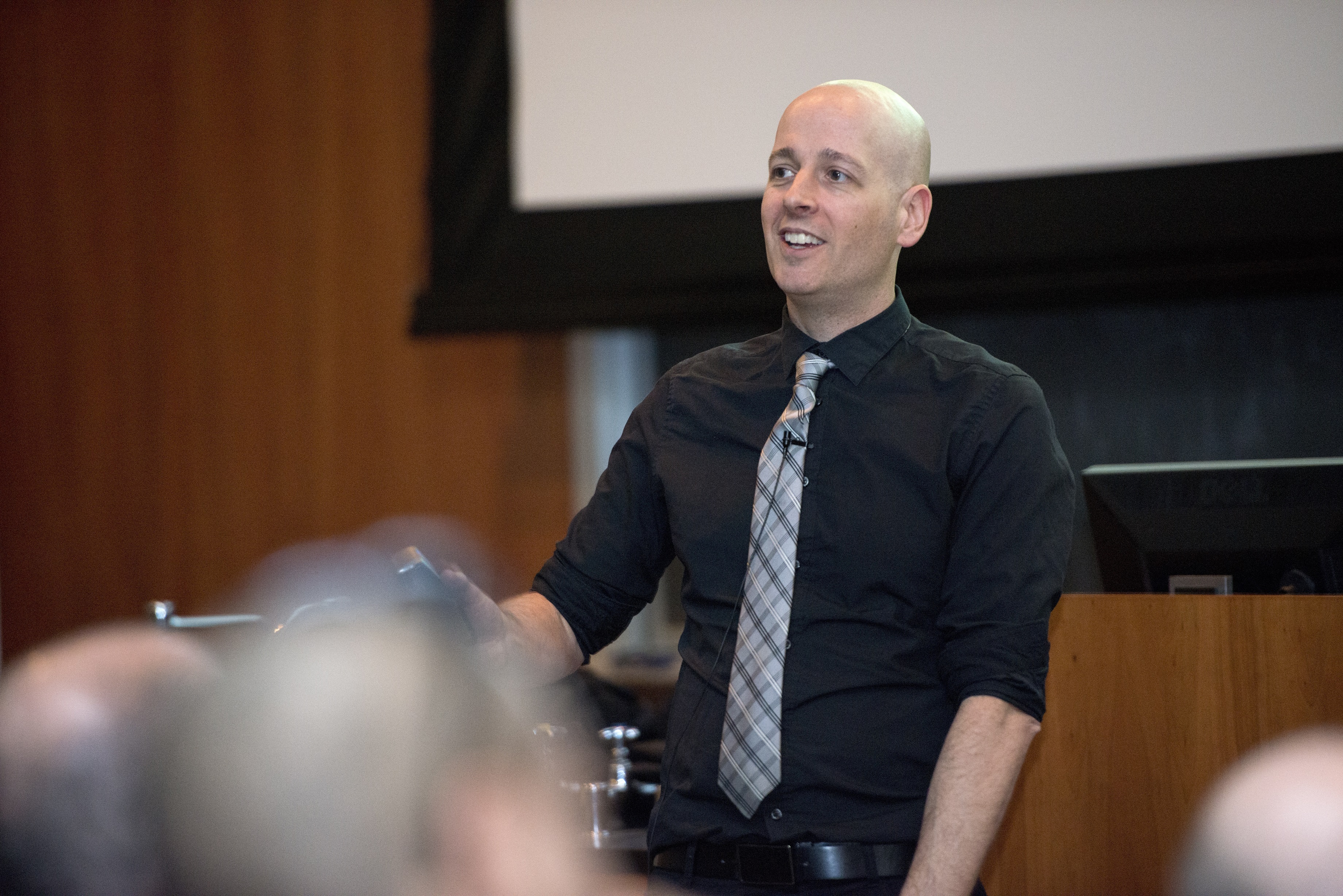NYU associate professor talks art, technology, and public spaces
 The clashes and synergies of art, technology, and public spaces was the subject of a lecture on Tuesday, April 8 by David Darts, associate professor and chair of the NYU Art Department and director of the NYU Studio Art MA program in Berlin, Germany. This event, co-sponsored by the School of Science and Engineering and the School of Fine and Performing Arts, took place in the Coykendall Science Building auditorium on the SUNY New Paltz campus.
The clashes and synergies of art, technology, and public spaces was the subject of a lecture on Tuesday, April 8 by David Darts, associate professor and chair of the NYU Art Department and director of the NYU Studio Art MA program in Berlin, Germany. This event, co-sponsored by the School of Science and Engineering and the School of Fine and Performing Arts, took place in the Coykendall Science Building auditorium on the SUNY New Paltz campus.
Convergences among contemporary art and design, technology, and freedom
Darts has produced “a rare fusion of art and technology and gives unique form to that which can be imagined,” described Paul Kassel, interim dean of the School of Fine and Performing Arts, in his introduction of the associate professor.
Darts is the creator of the Pirate Box, “a self-contained and mobile digital collaboration and file sharing system.” PirateBox uses open-source, free-to-use software to create mobile wireless communication and file sharing networks where users can exchange images, video, audio, documents, and other digital content. PirateBox never connects to the Internet, so users can work anonymously and without fear of censorship.
PirateBox grew from concerns Darts had as he assigned work to his students that involved copyrighted material (adverts, cartoons, and videos). Originally resorting to handing out flash drives individually to each student, he began to think wirelessly. What if he could he create for his students a wireless network to distribute files, but only locally, for instance, within his own studio.
Students took to this idea and began using it with enthusiasm. So much so, in fact, Darts’ students began using this local wireless network for more than schoolwork file sharing. Independent users began to catch on and started making suggestions for improvements and enhancements. Soon, there were versions of this technology whose names suggest their uses: COWorker Box; Library Box.
Darts said that, at this point, the technology took on a life of its own and he lost all control of the effort. And that was okay with him as a long-time advocate for open-source technology.
Art becomes public works initiatives
Darts went on to explain and exemplify how technology, whether emerging, existing, or experimental, has revolutionized and reconceived what public art is and how it can be created. Focusing on the urban landscape and how it guides or controls public behavior, we see how new materials, approaches, and applications can take a form-follows-function urban landscape, defy its constrictions, and see urban spaces in a new way.
Building on the concept of “psychogeography,” Darts described the effect that urban topography has on human behavior. Art collectives such as DRIFT and TURNING AROUND are examples of art simply “happening” in unexpected places and in unexpected ways said Darts. Rooftops become kite flying fields, parking spaces become micro-parks with grass and plants, and money, left out in the open, contains messages to remember to “pay it forward,” he said. It is in this way, Darts described, that the ordered universe we inhabit becomes a little more magical.

